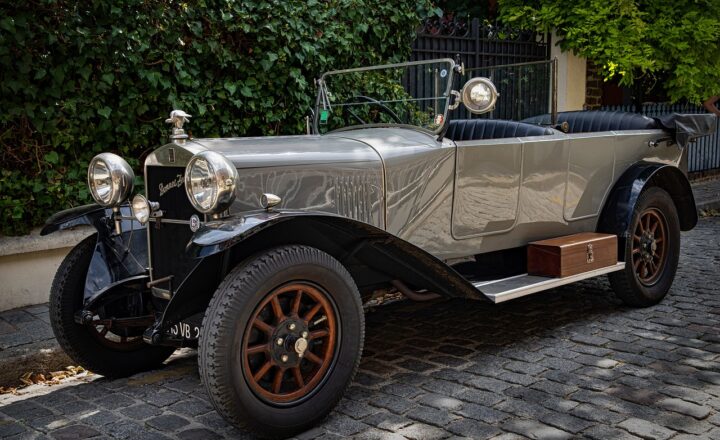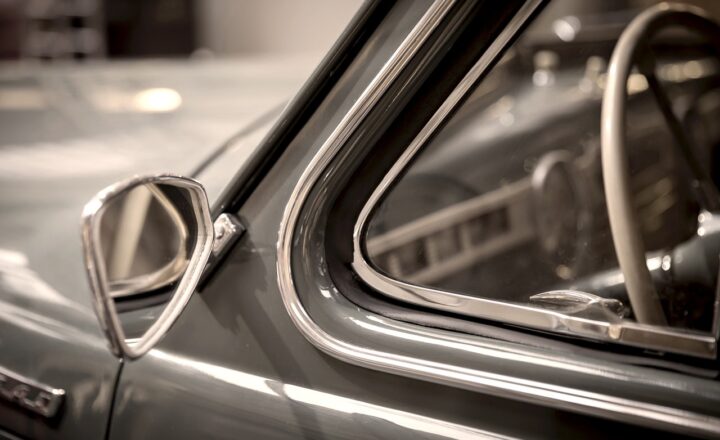
Muscle cars hold a revered place in American automotive history, capturing the hearts and imaginations of enthusiasts and casual drivers alike. Originating in the 1960s, the muscle car was designed for both power and performance, making it a staple in the world of high-speed automobiles. Despite facing declines during the oil crisis and shifts in consumer interest, these iconic vehicles are experiencing a remarkable resurgence in today’s market.
1. The Rise of Muscle Cars: An American Icon
The muscle car era began in the early 1960s, when American automakers started producing high-performance vehicles aimed at the youth market. These cars were characterized by their lightweight bodies and powerful V8 engines, allowing for impressive speed and thrilling rides. Some of the most notable models included the Ford Mustang, Chevrolet Camaro, and Dodge Charger.
Muscle cars emerged during a time of cultural change in America: a post-war economic boom, the rise of youth culture, and an increasing fascination with speed and rebellion.
2. Iconic Models and Their Impact on Car Culture
Numerous models defined the muscle car category, each contributing to a cultural phenomenon:
- Ford Mustang: Launched in 1964, the Mustang became an instant success, known for its stylish design and robust performance. It captured the youth market, showing that speed could be both accessible and affordable.
- Chevrolet Camaro: Released in 1966 as a response to the Mustang, the Camaro quickly gained popularity for its performance options, including the legendary Z28 model. It became synonymous with American muscle and rebellion.
- Dodge Charger: The Charger emerged as a powerful contender in the muscle car arena, known for its distinctive design and roaring Hemi engines, making it a favorite in both racing and street culture.
These models not only showcased speed and performance; they also became symbols of freedom and youth culture in America, appearing in countless movies, television shows, and music.
3. The Decline of Muscle Cars in the 1970s and 1980s
The golden age of muscle cars was short-lived. Beginning in the 1970s, several factors contributed to the decline of these powerful machines:
- Oil Crisis: The 1973 oil embargo led to skyrocketing fuel prices and a national shift towards more fuel-efficient vehicles. Radical changes in design and technology were necessary to meet new emissions standards and rising fuel costs.
- Safety Regulations: New safety features mandated by the government increased vehicle weight and drastically changed styling, making traditional muscle cars less appealing.
- Market Demand Shift: The American consumer shifted away from performance-focused cars toward practical sedans and compact cars that prioritized economy over speed.
By the 1980s, most classic muscle cars had vanished, and only a few existed as niche products, holding onto their legendary status by virtue of nostalgia.
4. The Resurgence of Muscle Cars in the 21st Century
Muscle cars began to make a comeback in the late 1990s and early 2000s, thanks to renewed interest in retro styles and performance vehicles. Several factors contributed to this resurgence:
- Technological Advances: Modern engineering has significantly improved fuel efficiency and performance, allowing manufacturers to blend power with environmental considerations. Advances in technologies like supercharging and fuel injection have raised the bar for performance without sacrificing efficiency.
- Consumer Demand: A growing segment of consumers craved the nostalgia associated with classic muscle cars, prompting manufacturers to resurrect their most iconic models, redesigned for contemporary markets.
- Muscle Car Events and Communities: Enthusiasts have created vibrant communities that celebrate muscle cars, hosting events, shows, and online forums, reigniting public interest and engagement.
By reintroducing classic models such as the Ford Mustang, Chevrolet Camaro, and Dodge Challenger, manufacturers stirred excitement and enthusiasm for performance vehicles among both old fans and new buyers alike.
5. The Future of Muscle Cars: A Balancing Act
As we look toward the future, muscle cars face new challenges amid changing industry landscapes and environmental concerns. Key considerations include:
- Electrification: The automotive industry is rapidly shifting towards electric vehicles (EVs), raising questions about the muscle car’s place in a sustainable future. Manufacturers are exploring high-performance electric muscle cars, illustrating that power and sustainability can coexist.
- Legacy and Innovation: Future muscle cars must balance their rich heritage with modern innovation. Car designers will need to retain the spirit of classic muscle while incorporating advanced technology to enhance performance, safety, and appealing design.
- Consumer Preferences: Understanding the evolving desires of consumers and blending the nostalgia of vintage muscle with contemporary designs and features will be essential for continued success in the market.
Muscle cars may be adapting, but their essence remains unyielded—power, speed, and the thrill of driving.
Conclusion: An Enduring Legacy
The muscle car is more than just a mode of transport; it represents a rich tapestry of American culture, history, and identity. From their exhilarating peak in the 1960s to their dramatic decline and triumphant return, muscle cars embody the spirit of freedom and individuality.
As the automotive world evolves amidst technological advancements and environmental considerations, the muscle car’s legacy will be tested yet again. In a quest to modernize and adapt, today’s models continue to capture the exhilarating essence of speed and power, ensuring that the muscle car remains a cherished symbol of American automotive passion for years to come.







